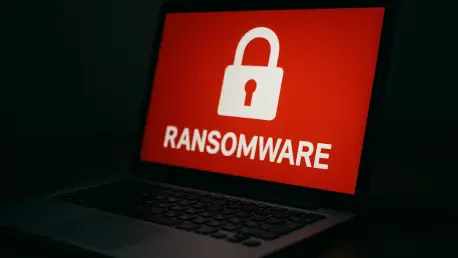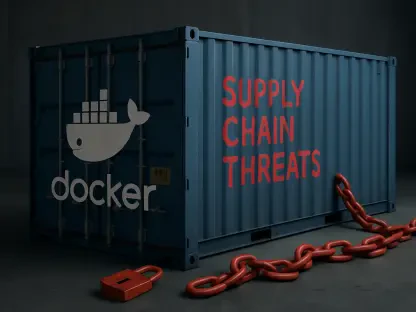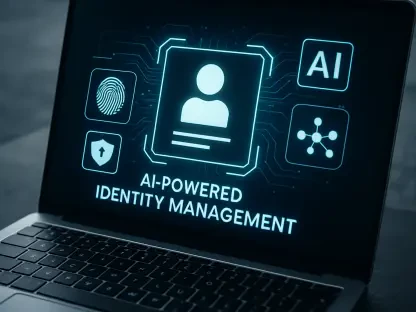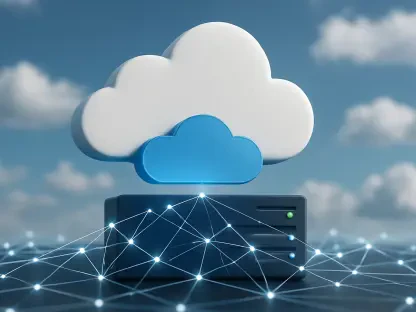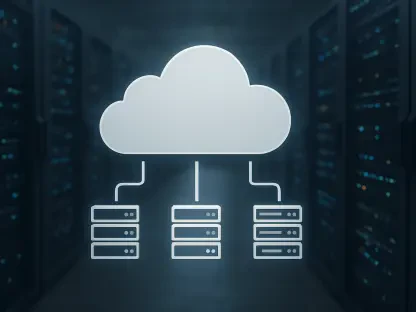Introduction
Imagine a large enterprise, with sprawling subsidiaries and complex IT systems, suddenly finding its critical data locked away by an invisible enemy exploiting the very cloud technology meant to streamline operations. This scenario is becoming increasingly common as cyber threat actors like Storm-0501 adapt to the digital transformation era, moving from traditional ransomware to sophisticated cloud-based attacks. The shift highlights a pressing challenge in cybersecurity, where the rapid adoption of hybrid cloud environments opens new vulnerabilities for attackers to exploit.
The purpose of this FAQ article is to address key concerns and questions surrounding Storm-0501’s evolving tactics, providing clarity on how these hackers operate and what organizations can do to protect themselves. By exploring the group’s methods and the broader implications of cloud-centric ransomware, this content aims to equip readers with actionable insights and a deeper understanding of the risks involved.
Readers can expect to learn about specific strategies employed by Storm-0501, the vulnerabilities they target in hybrid setups, and the critical importance of unified security measures. This article will break down complex concepts into clear, digestible answers, ensuring that both technical and non-technical audiences grasp the significance of this emerging threat landscape.
Key Questions or Key Topics
What Is Storm-0501 and Why Is It a Significant Threat?
Storm-0501 is a notorious hacker group that has recently shifted its focus from conventional endpoint ransomware to advanced cloud-based attacks, leveraging the unique capabilities of cloud environments. This transition is significant because it reflects a broader trend among cybercriminals to exploit the growing reliance on cloud infrastructure, which often lacks the robust security measures found in traditional systems. The group’s adaptability poses a serious risk to enterprises that may not yet fully understand or address these evolving threats.
Their importance as a threat lies in their ability to navigate and manipulate hybrid cloud setups, where on-premises and cloud systems intersect. By targeting unmanaged devices and security gaps, Storm-0501 can evade detection, escalate privileges, and inflict devastating damage through data exfiltration and backup destruction. This makes them a formidable adversary in a digital landscape where cloud adoption continues to accelerate.
Evidence of their impact can be seen in recent campaigns targeting large organizations with multiple subsidiaries, where incomplete security coverage across systems allowed the group to operate undetected for extended periods. Their persistence and technical sophistication underscore the urgent need for comprehensive cybersecurity strategies that address both on-premises and cloud environments.
How Does Storm-0501 Exploit Hybrid Cloud Environments?
Hybrid cloud environments, which combine on-premises and cloud systems, present unique challenges due to inconsistencies in security deployments and visibility gaps. Storm-0501 exploits these weaknesses by targeting systems that are not fully integrated into security monitoring tools, allowing them to move laterally across networks without triggering alerts. This approach is particularly effective in multi-tenant setups where trust relationships between domains can be manipulated.
In a documented case, the group compromised an enterprise by focusing on non-onboarded systems lacking advanced endpoint protection. They used tools like Evil-WinRM for lateral movement and native Windows commands for reconnaissance, demonstrating a deep understanding of system architecture. Additionally, by targeting specific servers like Entra Connect Sync, they established pivot points to tunnel through networks and access privileged accounts.
Their ability to adapt is evident in how they handle robust defenses such as multi-factor authentication (MFA). When initial attempts to access high-value accounts fail, they shift focus to other domains or servers, searching for misconfigurations or admin identities without adequate protection. This relentless strategy highlights the critical need for consistent security policies across all IT components to prevent exploitation.
What Specific Tactics Does Storm-0501 Use to Gain Control in Cloud Systems?
Storm-0501 employs a range of sophisticated tactics to infiltrate and dominate cloud systems, often starting with compromising key infrastructure components. One notable method involves targeting Entra Connect Sync Directory Synchronization Accounts to enumerate users and resources within a tenant, providing a foothold in the cloud environment. This initial breach serves as a gateway to broader access and control.
Once inside, the group focuses on privilege escalation by identifying and exploiting admin identities lacking proper safeguards. In one instance, after being blocked by Conditional Access policies, they moved laterally to another domain, compromised a second server, and reset the password of an unprotected admin account to gain Global Admin status. This level of access allowed them to manipulate the entire cloud domain at will.
Their use of techniques like DCSync attacks to harvest password hashes further illustrates their technical prowess. By combining these methods with strategic exploitation of policy gaps, Storm-0501 ensures persistence even in well-defended environments. Such tactics emphasize the importance of enforcing strict identity protection measures and continuous monitoring to detect and mitigate unauthorized access attempts.
Why Are Cloud-Based Ransomware Attacks a Growing Concern?
The rise of cloud-based ransomware attacks, as exemplified by Storm-0501’s operations, is a growing concern due to the inherent complexities of managing security across hybrid environments. As organizations increasingly migrate to the cloud for scalability and efficiency, they often overlook the disparities between on-premises and cloud security postures, creating opportunities for attackers to strike. This trend is alarming because cloud systems frequently house sensitive data and critical operations.
Unlike traditional ransomware, which primarily targets endpoints, cloud-based attacks leverage native cloud capabilities for speed and scale, enabling rapid data exfiltration and system-wide disruption. Attackers can destroy backups stored in the cloud, leaving organizations with little recourse for recovery. This shift in strategy amplifies the potential impact of each attack, making recovery more costly and time-intensive.
The consensus among cybersecurity experts is that the sophistication of groups like Storm-0501 signals a need for heightened vigilance. Their ability to exploit emerging technologies outpaces many organizations’ defensive capabilities, particularly when security tools are not uniformly deployed. Addressing this concern requires a proactive approach to closing visibility gaps and ensuring robust protection across all digital assets.
Summary or Recap
This FAQ consolidates essential insights into Storm-0501’s transition to cloud-based ransomware, emphasizing the group’s ability to exploit hybrid cloud environments through targeted attacks on unmanaged systems and privilege escalation. Key points include their use of sophisticated tactics like compromising synchronization accounts and bypassing security measures through lateral movement and misconfiguration exploitation. These strategies reveal a critical vulnerability in the way many organizations manage their IT infrastructure.
A major takeaway is the urgent need for unified security coverage that spans both on-premises and cloud systems, alongside strict identity protection measures such as MFA for all accounts. The persistent nature of these attackers demonstrates that even robust defenses can be circumvented if gaps exist, highlighting the importance of continuous monitoring and policy enforcement. Organizations must prioritize addressing these disparities to mitigate risks effectively.
For those seeking deeper exploration, additional resources on hybrid cloud security and ransomware prevention are recommended, including industry reports and best practice guides from cybersecurity authorities. Staying informed about evolving threats and defensive strategies remains crucial in an era where digital transformation and cyber risks are inextricably linked.
Conclusion or Final Thoughts
Reflecting on the detailed examination of Storm-0501’s tactics, it becomes evident that their shift to cloud-based ransomware marks a pivotal moment in the evolution of cyber threats. The persistent innovation displayed by such groups demands an equally dynamic response from organizations that often underestimate the risks of hybrid cloud setups. Their ability to exploit even minor oversights serves as a stark reminder of the stakes involved in securing digital environments.
Looking ahead, enterprises are encouraged to take proactive steps by conducting thorough audits of their IT systems to identify and address visibility gaps. Implementing comprehensive security tools and enforcing consistent policies across all domains emerge as non-negotiable actions to safeguard against similar threats. Beyond immediate defenses, fostering a culture of cybersecurity awareness proves essential to anticipate and counter the ever-adapting strategies of cybercriminals.
This topic likely resonates with many, as cloud adoption has become integral to business operations across industries. Readers are urged to evaluate their own systems, considering how vulnerabilities in their hybrid environments could be exploited and what measures could be prioritized to prevent such scenarios. Taking these actionable steps offers a pathway to resilience in an increasingly complex digital landscape.
